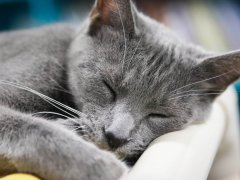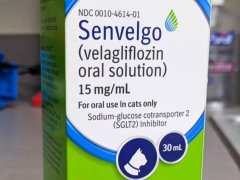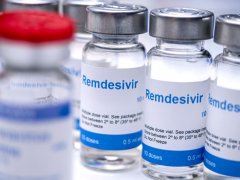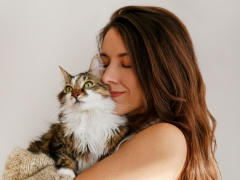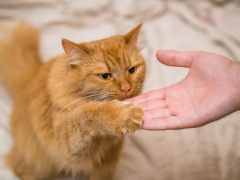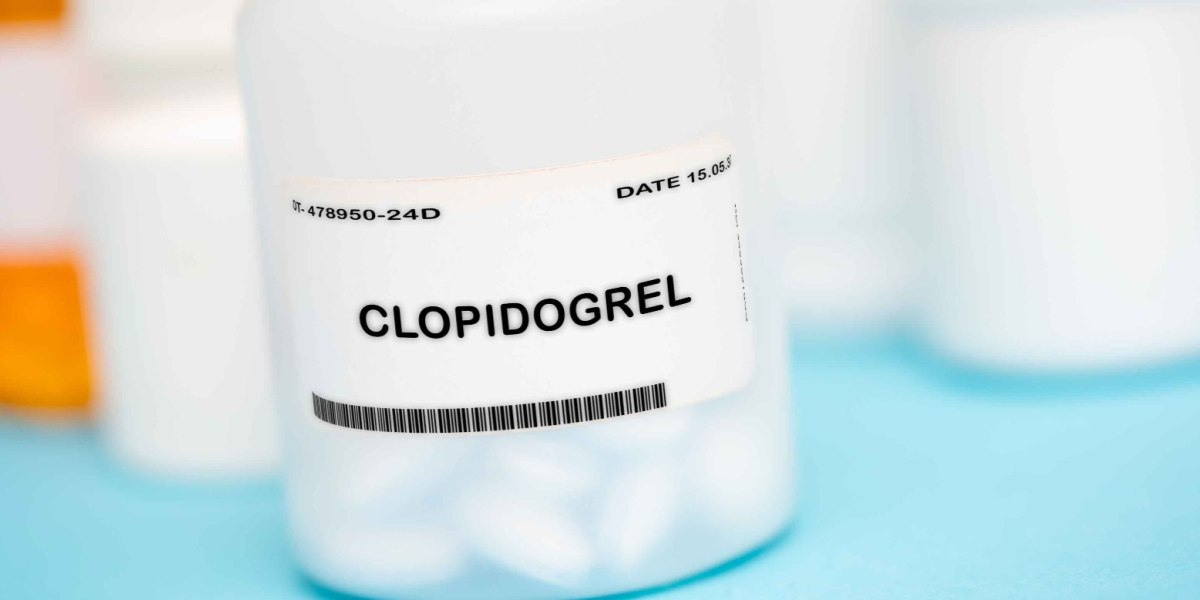
luchschenF / Shutterstock.com
Clopidogrel is a medication used to prevent abnormal blood clots from forming. It is most often used for cats with heart disease or those otherwise at risk for life-threatening blood clots forming. In this article, you’ll learn how clopidogrel works, situations where it is used in cats, and precautions to keep in mind.
Clopidogrel for Cats Overview

About Clopidogrel for Cats
Clopidogrel is commonly referred to by its brand name Plavix. Plavix is used to reduce the risk for abnormal blood clot formation.
Platelets, or thrombocytes, are small cell pieces that aid in forming blood clots. Platelets function by binding together in cooperation with some other components in the blood.
Blood clots are usually a good thing. They are chiefly what stop wounds from bleeding and helping the body to heal. However, some pets can be at a high risk for forming platelets abnormally. Large blood clots that form, called thrombi, can get lodged in a blood vessel, causing serious illness.
Clopidogrel works by binding directly to the surface of a platelet and deactivating part of what allows it to bind to other platelets.
There are a few conditions seen in cats that put them at a high risk of forming abnormal blood clots.
Heart disease is the most common underlying cause. Hypertrophic cardiomyopathy (HCM) is the most frequently diagnosed type.
Feline Aortic Thromboembolism (FATE) which also may be referred to as a saddle thrombus, is a condition where a blood clot lodges in the aorta. This most often causes pain and loss of function in the back legs. One of the front legs may be affected instead.
Blood clots may also lodge in the lungs (pulmonary thromboembolism), causing breathing trouble, or in the brain (stroke), causing neurologic disease.
While FATE is a separately described condition, it occurs most commonly due to underlying heart disease, especially HCM.
While veterinarians most often prescribe clopidogrel for cats diagnosed with heart disease, it may be prescribed for any condition where increased blood clot formation is a health risk.
Dosing Information for Cats
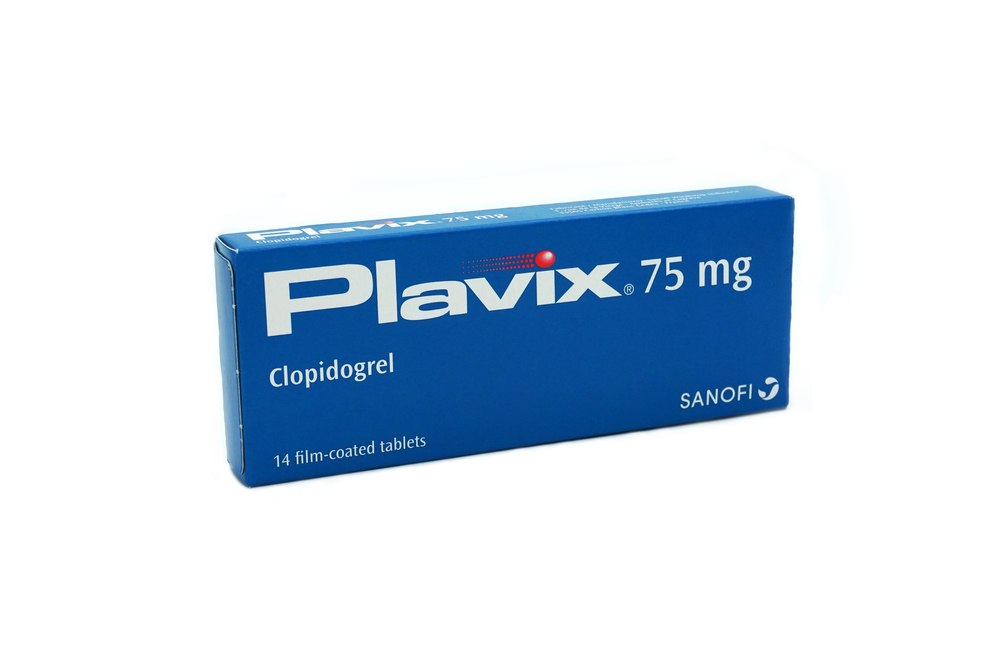
azmanq / Shutterstock.com
Note: The following information should not be used to replace a veterinary visit or alter your vet’s prescribing information. You should never use a human medication in your cat that was prescribed for you or a family member without consulting your own vet.
Clopidogrel is not FDA-approved for use in cats and is therefore always prescribed off-label. This is common in veterinary medicine.
The most common dose for cats is ¼ of the 75mg clopidogrel tablet (18.75mg) given once a day.
Higher doses, called loading doses, may be used in cats with an active blood clot condition or at high risk. This may include a saddle thrombus or active PTE or stroke. Sometimes, an embolus (large, free roaming clot) may be seen in a heart chamber during an echocardiogram in a cat with heart disease.
Always check with your veterinarian or veterinary specialist (like a cardiologist) for accurate dosing of clopidogrel based on your cat’s specific condition.
How to Administer Clopidogrel to Cats

Chris Vanderhoof / Cats.com
Clopidogrel is most often given as a tablet. Some cats may allow you to hide the tablet in their soft/wet food. Others may prefer taking it with a treat, like a Pill Pocket. For tips on how to administer clopidogrel this way, see our article on hiding pills in food.
If your cat is extremely clever (and many are), hiding medication in food may not work well. You may need to administer the tablet directly by mouth to ensure your cat takes the medication. For help on how to give your cat a tablet medication by mouth, see our article on how to give your cat a pill.
The tablet form of clopidogrel is very bitter in taste. This may make the tablet form not feasible. If this is the case, speak to your vet about getting clopidogrel compounded. Compounded forms may include chewable tablets and oral liquid.
Side Effects of Clopidogrel for Cats
The most common side effects for clopidogrel in cats are gastrointestinal signs, including:
In cats newly diagnosed with heart disease where a couple of medications may be required, it is common to start one at a time, several days apart. This can help reduce the impact on the digestive tract.
Bleeding risk with clopidogrel is considered very low in pets. The risk is low in people as well (about 3%) but is still possible. There are other factors in the body that contribute to blood clotting, so coagulation will still happen. However, cats that receive wounds or injuries may have a harder time clotting and healing.
Signs of bleeding risk to look out for include:
- Vomiting coffee grounds-like material
- Black or tarry, sticky stools
- Bruising (the gums and belly may be the easiest places to check)
- Blood discharge from the nose
- Blood in the urine
- Difficulty breathing
Overdose and Emergencies
There is little information on clopidogrel overdoses. If you suspect your cat received an overdose of clopidogrel make sure to immediately contact one or more of the following for advice:
- Your veterinarian
- ASPCA Animal Poison Control Center (1-888-426-4435)
- Pet Poison Helpline (1-855-764-7661)
Cats may sometimes be prescribed a half or whole tablet as a loading dose. Doses ranging from 18.75mg to 75mg have been studied. Serious concerns may not be seen with a single higher dose in this range. However, clopidogrel’s effects on platelets last for the lifespan of a platelet which can be for several days. Because of the length of time that ill effects may occur, always consult with one of the poison hotlines above.
Potential Drug Interactions With Clopidogrel
Following is a list of the medications that most commonly may interact with clopidogrel. Unless clearly stated, being in this list does not mean that a medication cannot be used together with clopidogrel. There are cases where careful monitoring of medications together and discussion with your vet may be needed.
Aspirin
There may be increased risk for gastrointestinal bleeding and harm to the kidneys. Cats are very sensitive to non-steroidal anti-inflammatory (NSAID) use. Use of aspirin is generally discouraged in cats compared to other medications that have shown better safety and/or efficacy.
While it is common for aspirin to be used together with clopidogrel in people, this is not the case in cats. Clopidogrel is considered a superior antithrombotic medication compared to aspirin. Little benefit has been seen in cats when combining the two and the risk of using aspirin likely outweighs any benefits as an antithrombotic.
- Azole antifungals (fluconazole, itraconazole): decreased efficacy of clopidogrel
- Calcium channel blockers (amlodipine): may result in decreased efficacy of clopidogrel
- Chloramphenicol: may decrease efficacy of clopidogrel
- Cimetidine: may decrease clopidogrel’s effects
- Cyclosporine (Atopica): may increase cyclosporine peak concentrations
- Low-molecular weight heparins (dalteparin, enoxaparin): may increase bleeding risk
- Isoniazid: may reduce clopidogrel’s effects
- NSAIDs: increased risk for bleeding and clopidogrel may interfere with NSAID metabolism
- Opioids (buprenorphine, tramadol): may reduce clopidogrel’s effects
- Omeprazole: in humans, use with clopidogrel is contraindicated (don’t use together) as it can reduce clopidogrel’s antiplatelet effects. This has not been seen in dogs or cats, but many vets will advise using a different antacid, like famotidine (Pepcid) instead.
- Prednisone: may theoretically increase clopidogrel’s antiplatelet effects and increase bleeding risk, though this has not been observed in dogs or cats
- Rifampin: may increase clopidogrel’s effects
- Rivaroxaban: may increase risk for bleeding, but has been demonstrated in cats to be used safely with clopidogrel in studies
- SSRIs (fluoxetine): may increase risk for bleeding
- Torsemide: may interfere with torsemide metabolism
- Warfarin: may increase risk for bleeding and clopidogrel may interfere with warfarin metabolism
How to Store Clopidogrel
Clopidogrel tablets should be stored at 77 degrees F (25 degrees C). A range of 59 degrees F to 86 degrees F is considered acceptable.
Drug Dosing Disclaimer: We are only able to provide doses for medications that are FDA approved for use in cats and only as the label guidelines dictate. For medications that are used off-label we can only provide guidelines and safety information for use. Safe and appropriate dosing for off-label medications can only be determined by a primary care veterinarian.
We encourage you to work with your veterinarian to determine if a particular medication is appropriate for your cat. Changing or adjusting a dose for your cat on your own without consulting with a veterinarian can carry risk. We do not encourage use of medications prescribed for human use in pets without first consulting with a primary care veterinarian.
-
A Budde, J., & A McCluskey, D. (2023). Clopidogrel [Professional app]. In Plumb’s Veterinary Drug Handbook (10th ed.). Wiley Blackwell.
-
Hogan, D. F., Andrews, D. A., Green, H. W., Talbott, K. K., Ward, M. P., & Calloway, B. M. (2004). Antiplatelet effects and pharmacodynamics of clopidogrel in cats. Journal of the American Veterinary Medical Association, 225(9), 1406–1411. https://doi.org/10.2460/javma.2004.225.1406
-
R Forsythe, L., & Gollakner, R. (n.d.). Clopidogrel. VCA Animal Hospitals.
-
J Wooten, S. (2024, March 22). Clopidogrel for Cats: A Medication That Can Help Treat Blood Clots (G. Bei, Ed.). GoodRX.
-
Rishniw, M. (2024). How much protection does clopidogrel provide to cats with hypertrophic cardiomyopathy? Journal of the American Veterinary Medical Association, 262(10), 1422–1424. https://doi.org/10.2460/javma.24.04.0269
-
Hogan, D. F., Fox, P. R., Jacob, K., Keene, B., Laste, N. J., Rosenthal, S., Sederquist, K., & Weng, H. (2015). Secondary prevention of cardiogenic arterial thromboembolism in the cat: the double-blind, randomized, positive-controlled feline arterial thromboembolism; clopidogrel vs. aspirin trial (FAT CAT). Journal of Veterinary Cardiology, 17, S306–S317. https://doi.org/10.1016/j.jvc.2015.10.004
-
Lo, S. T., Walker, A. L., Georges, C. J., Li, R. H., & Stern, J. A. (2021). Dual therapy with clopidogrel and rivaroxaban in cats with thromboembolic disease. Journal of Feline Medicine and Surgery, 24(4), 277–283. https://doi.org/10.1177/1098612x211013736
